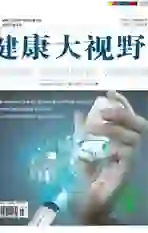骨折不同治疗时间对移位型肱骨髁上骨折患者切开复位、并发症和临床结局的影响
2018-12-07李炯周军
李炯 周军
【摘 要】
目的:本研究觀察分析发生肱骨髁上骨折儿童患者在不同的治疗时间的各项指标,分析治疗时间对于患者切开复位、并发症和临床结局的影响。方法:收集2010年~2017年的肱骨髁上骨折手术的患儿200名,进行回顾性分析。不同治疗时间对移位型肱骨髁上骨折患者切开复位、并发症和临床结局是的影响使用logistic回归分析。结果:开放性手术在343例髁上肱骨骨折中的发生率为2.6%。并发症发生率与文献(10.8%)相似,主要由瞬时神经损伤(9.0%)组成,所有这些都通过保守治疗完全可逆。1.7%的患者出现不良预后。手术治疗延迟对开放手术率(P = 0.662),并发症(P = 0.365)或不良结局(P = 0.942)没有影响。结论:在SCHF有足够的血液灌输且神经功能稳定时,选择性治疗,避免在半夜进行外科手术对于医生和患者都是最好的选择。
【关键词】 儿童;肱骨髁上骨折;延期治疗;切开复位;并发症
【中图分类号】R726.8
【文献标志码】B
【文章编号】1005-0019(2018)21-020-01
Displaced supracondylar humeral fractures:influence of delay of surgery on the incidence of open reduction, complications and outcome
LI Jong1 ZHOU Jun2
1.department of orthopedics, Dingxing County Hospital For Hebei province , 072650 china
2.department of orthopedics, Gem Flower Oriental Hospital For Baoding , Heibei Xushui 072550 , china
Abstract Objective: This study was used to collect the indicators of different treatment time happened on the children displaced supracondylar humeral fractures, then analyze the influence of delay of surgery on the incidence of open reduction, complications and outcome. Methods:Three hundred and forty-one children with 200 supracondylar humeral fractures (Gartland II:144; Gartland III:199) who underwent surgery between 2010and 2017 were retrospectively analysed. The group consisted of 194 males and 149 females. The average age was 6.3 years. Mean follow-up was 6.2 months. Time interval between trauma and surgical intervention was determined using our institutional database. Clinical and radiographical data were collected for each group. Influence of delay of treatment on rates of open reduction, complications and outcome was calculated using logistic regression analysis. Results:The incidence of open procedures in 343 supracondylar humeral fractures was 2.6 %. Complication rates were similar to the literature (10.8 %) primarily consisting of transient neurological impairments (9.0 %) which all were fully reversible by conservative treatment. Poor outcome was seen in 1.7 % of the patients. Delay of surgical treatment had no influence on rates of open surgery (P = 0.662), complications (P = 0.365) or poor outcome (P = 0.942).Conclusions:In SCHF with suffcient blood perfusion and nerve function, elective treatment is reasonable to avoid surgical interventions in the middle of the night which are stressful and wearing both for patients and for surgeons.
Key words:Children; Supracondylar humeral fracture; Delay of treatment; Open reduction; Complications
肘部斷裂是儿童期间最常见的骨折之一,其中髁上肱骨骨折(supracondylar humeral fractures SCHF)的发生率为60-80%[1]。它是7岁以下年龄组中最常见的骨折,是7岁以后第二常见的骨折[2]。儿童肱骨髁上骨折可分为伸直型骨折和屈曲型骨折。前者发生率约为97%,而后者发生率不到 3%[3]。Gartland[4]分型目前是国际通用的分型方法。
1 材料和方法
1.1 资料来源 选择2010年1月-2017年12月期间我院诊断为肱骨髁上骨折的患者。纳入标准:选取我院接受治疗的肱骨髁上骨折的儿童患者供给721名,对这些患者根据射线照片进行Gartland的骨折类型分类。排除标准:属于Gartland I 类或Gartland II类中轻微背部宽展的和进行了保守治疗的(352名),另外有26名患者被排除,因为开放性骨折(n=9),资料不完整(n=8),Y性骨折(n=8)和病理性骨折(n=1)。
1.2 手术方法以及术后管理 手术前预防:在手术前分配抗生素,并且麻醉师确保患者的完全松弛。温和的手动牵引分离了骨折碎片。通过荧光镜检查重新检查片段的充分动员。
术后管理方案包括一个长臂铸造的90度弯头肘和中性到前臂的轻微后仰位置4周。移除铸件,并通过肘的前-后和侧向X射线证明骨折的愈合。禁止接触运动,直到术后8周。在平静的情况下,主要医生照顾并进行进一步的随访。
1.3 统计学分析 使用逻辑回归分析来分析延迟治疗对三个结果变量的影响。当频率<5时使用Fisher精确检验。双尾t检验和单因素方差分析用于连续数据的比较。P <0.05具有统计学意义,有显著相关性。用SPSS 22.0进行统计学分析。
2 结果
2.1 基线特性 术后随访期, 发现Baumann角在组之间显着不同,并且事后分析显示该差异是由于与6-12h组相比,<6h组中的值更高(P = 0.004),发现所有其他组(P > 0.05)。值得注意的是,在早期治疗组中发现较高比例的Gartland III级骨折(P <0.01)。
2.2 差异性分析 38例(10.8%)患者在术前影响16例中神经的神经系统症状,7例中的尺神经,9例中的桡神经和9例患者的混合性感觉异常。有和无术前神经损伤患者的治疗延迟没有差异343例骨折中的9例(2.6%)经历了开放性骨折。
37例(10.8%)患者发生了并发症,包括31(9.0%)例术后神经疾病,1个早期再手术和5个呼吸道感染。术后神经系统症状影响尺神经17例,中位神经7例,桡神经7例。Gartland III骨折闭合或开放性并发症的并发症发生率没有显着差异(190例中有28例,9例中有1例,P = 0.613)。
在6名患者中观察到根据Flynn标准的不良结果。5例患者有轻度肘内翻。另一个患者具有明显的运动范围损失。
2.3 logistics回归分析 Logistic回归分析显示,手术时较高的患者年龄与整个队列和Gartland III级骨折中更高的并发症风险相关(P = 0.040,优势比1.146,95%对整个队列的依从性为1.001-1.305;P = 0.035,优势比1.171,95%级别1.011-1.356的Gartland III级骨折)。
讨论
不同治疗时间对移位型肱骨髁上骨折(SCHF)患者切开复位、并发症和临床结局的影响在文献上有不同的观点和争议。紧急治疗的支持者降低围手术期并发症的风险,更容易减少开放骨折部位的可能性,以及早期的出院作为潜在的好处。
最近的研究比较结果依赖于治疗延迟8 h[5-6],12 h[7-8]或21 h[9]符合我们的研究。这些研究没有发现切开复位[10-11],神经损伤[5],不良预后[8],感染[7],血管并发症[7],手术时间,术后住院时间以及多种放射参数[11]测量的降低质量。
与我们的研究一致,几个在早期治疗组中有较高的严重骨折率的文献[6]表明更严重的骨折往往更加紧急地需要治疗,我们的研究结果显示没有手术治疗延迟超过6,12或24小时关于需要切开复位,并发症和不良预后的影响。研究的优势是与大多数涉及该主题的研究相比,患者数量较多。
这项研究有一些限制:研究的主要限制是其属于回顾性设计,与前瞻性研究设计相比更容易受到偏倚。另一个限制可能是较短的随访时间。我们研究的平均随访时间为6个月,认为较长时期的随访不会改变本研究结果的质量。
本研究的目的不是一般支持髁上肱骨骨折的延迟治疗。通常,如果固定在铸件中,疼痛管理是没有问题的。由于许多髁上肱骨骨折发生在下午或晚些时候,立即手术通常是不可能的,因为缺乏手术室的即时可用性,我们建议在第二天以选择性方式延迟手术治疗。
SCHF对于儿童患者的研究可以看出,延期治疗对于切开复位、并发症和不好的结果并没有显著性的影响。因此,在SCHF有足够的血液灌输且神经功能稳定时,选择性治疗,避免在半夜进行外科手术对于医生和患者都是最好的选择。
参考文献
[1] Wang Y L, Chang W N, Hsu C J, et al. The recovery of elbow range of motion after treatment of supracondylar and lateral condylar fractures of the distal humerus in children.[J]. Journal of Orthopaedic Trauma, 2012, 23(2):120-125.
[2] Anmol S, Walia JPS, Brar B S, et al. Early results of displaced supracondylar fractures of humerus in children treated by closed reduction and percutaneous pinning[J]. Indian Journal of Orthopaedics, 2015, 49(5):529.
[3] Flynn J, Skaggs D L, WatersPM. Rockwood & Wilkins Fractures in Children[J]. Journal of Bone & Joint Surgery American Volume, 2014.
[4] Titmuss A T, Biggin A, Korula S, et al. Diagnosis and Management of Osteoporosis in Children[J]. Current Pediatrics Reports, 2015, 3(2):187-199.
[5] Aslan A, Konya M N, Ozdemir A, et al. Open reduction and pinning for the treatment of Gartland extension type III supracondylar humeral fractures in children[J]. Strategies in Trauma and Limb Reconstruction, 2014, 9(2):79-88.
[6] Kao H K, Lee W C, Yang W E, et al. Clinical Significance of Anterior Humeral Line in Supracondylar Humeral Fractures in Children[J]. Injury-international Journal of the Care of the Injured, 2016, 47(10):2252-2257.
[7] Oetgen M E, Mirick G E, Atwater L, et al. Complications and Predictors of Need for Return to the Operating Room in the Treatment of Supracondylar Humerus Fractures in Children.[J]. Open Orthopaedics Journal, 2014, 9(1):139-142.
[8] Barróntorres E A, Sánchezcruz J F, Cruzmeléndez J R. [Clinical and epidemiological characteristics of humeral supracondylar fractures in pediatric patients in a Regional General Hospital].[J]. Cirugia Y Cirujanos, 2015, 83(1):29-34.
[9] Silva M, Cooper S D, Cha A. The Outcome of Surgical Treatment of Multidirectionally Unstable (Type IV) Pediatric Supracondylar Humerus Fractures.[J]. Journal of Pediatric Orthopedics, 2015, 35(6).
[10] Ozkul E, Gem M, Arslan H, et al. Surgical treatment outcome for open supracondylar humerus fractures in children[J]. Acta Orthopaedica Belgica, 2013, 79(5):509-513.
[11] Peshin C, Dhamele J, Nagda T. Controversial Issues in Closed Reduction and percutaneous pinning of Supracondylar Fractures of Humerus in children[J]. 2015, 1:11-15.
